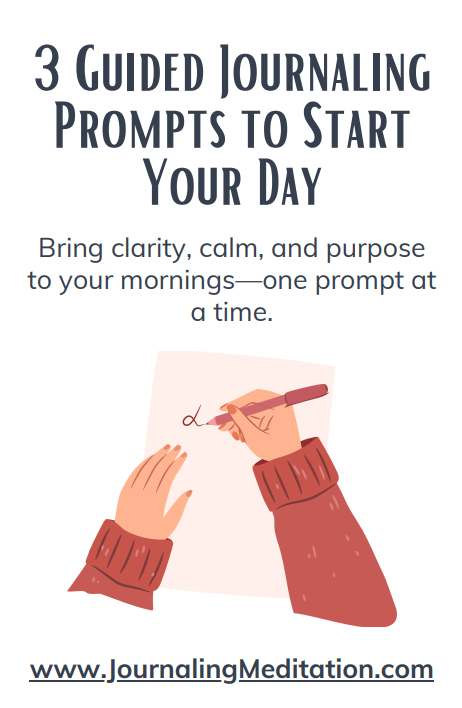You may have come across the idea of bullet journaling on social media, in a conversation, or maybe scrolling through the internet. But what is a bullet journal for? It’s a question that intrigues those who want to to simplify their lives, looking for a personal approach to organization, and support a practice of journaling and mindfulness. Let’s take a look at the multifaceted answer to this question and uncover the true power of bullet journaling.

(This post contains affiliate links. If you make a purchase through these links, I may earn a commission at no extra cost to you.)
What is a Bullet Journal for?
Let’s get right to the point. There are a multitude of uses for a bullet journal. The biggest question for you is what are you looking to get out of your journal?
Planning and Organization
A bullet journal is an organization system that combines elements of a diary, a planner, and to-do lists, making it a powerful tool for managing different areas of your life. Here’s how it helps in setting personal goals, tracking habits, and managing finances:
Setting Personal Goals
- Creates clarity and focus: Writing down your goals in a bullet journal helps clarify what you want and keeps you focused on your priorities. It can help focus your ambitions towards achievable targets.
- Outlines actionable steps: Breaking down your goals into smaller, actionable tasks in your bullet journal can make them feel more manageable. This method helps you to plan step-by-step actions to reach your larger objectives.
- Find motivation and accountability: Regularly reviewing your goals in the journal can serve as a motivational boost. Additionally, tracking your progress creates a sense of accountability, pushing you to stay committed.
Tracking Habits
- Track your habits: Bullet journals are great for creating habit trackers, where you can log daily habits you’re trying to build or break. This visual representation of your habits allows you to see patterns, progress, and areas that need improvement.
- Reflecting and Adapting: By reflecting on your habit tracking, you can better see and understand your behaviors and triggers. This allows you to make necessary adjustments to your routines and strategies for creating wanted habits or stopping the unwanted ones.
Managing Finances
- Budgeting: A bullet journal can be used to create a personalized budgeting system. You can set pages up to track your income, expenses, savings, and financial goals, giving you a clear overview of your financial health.
- Expense Tracking: Logging your daily expenses helps you become more aware of your spending habits. Over time, this awareness can lead to more mindful spending. questioning frivolous spending and reinforcing a motivation to save.
- Financial Goals: Similar to setting personal goals, your financial goals can be broken down into actionable steps within your journal. Tracking these goals with your expenses and savings can help you make informed decisions to reach your financial objectives.
Creative Expression
Bullet journals go beyond organization; they are a canvas for creativity, self-expression, personal reflection and all out exploration. This creative point is one of the key reasons behind the bullet journal’s popularity. Here’s how bullet journals serve as an outlet for creativity:
Sketching and Artwork
- Visual Thinking: For many, thinking visually is natural. Sketching in a bullet journal helps in brainstorming ideas, conceptualizing goals, and even problem-solving. Doodles and drawings can make abstract concepts tangible and easier to understand or remember.
- Artistic Outlet: A bullet journal provides a space for spontaneous artistic expression. Whether you’re a traditional artist or a casual doodler, incorporating sketches and artwork can turn your journal into a personal art gallery that reflects your moods and experiences.
Thematic Layouts
- Seasonal Themes: Some bullet journal enthusiasts use themes based on the season, using colors, patterns, and motifs that reflect the time of year. This practice not only beautifies the journal but also helps in aligning one’s mood and activities with the turn of the seasons.
- Conceptual Themes: Beyond seasonal themes, some users choose themes based on ideas, interests, or even favorite books or movies. This thematic approach can make planning and journaling an exciting experience.
Personalization and Self-Expression
- Create custom layouts: Unlike your regular planners, a bullet journal’s layout is created from scratch, offering endless possibilities for customization. Users can design their pages to suit their unique needs and preferences, making each journal personal.
- Use decorative elements: Washi tape, stickers, stamps, and calligraphy are just a few of the decorative elements that can be incorporated into a bullet journal. These embellishments not only enhance the visual appeal of the journal but also allow users to express their personality and style.
- An opportunity to reflect: The process of personalizing a bullet journal can be reflective. It encourages users to slow down, contemplate their choices, and engage in an awareness of self-expression.
Memory Keeping
- Keeping cherished memories: By including sketches, personal notes, and theme-based layouts, a bullet journal grows into a keepsake that is filled with cherished memories. It becomes a snapshot of one’s life at a particular moment, preserving thoughts, ambitions, and experiences.
- Tell your story: Each page of a bullet journal can tell a story. Whether it’s through daily reflections, art, or themed layouts, the journal captures one’s journey, making it a valuable record of personal growth and events.
Mindfulness and Reflection
The attractiveness of bullet journaling for mindfulness practitioners lies in its adaptability and personalization, making it an ideal tool for encouraging gratitude and emotional well-being. Here’s how different aspects of a bullet journal can support mindfulness practices:
Gratitude Logs
- Helps cultivating positivity: Regularly writing down things you’re grateful for in a gratitude log can shift focus from what’s lacking to what you have in your life. This practice has been shown to improve positivity, reduce stress, and help overall mental health.
- Reflection: The act of reflecting on daily or weekly blessings promotes a deeper appreciation for life’s little things, reinforcing a habit of finding goodness in everyday moments.
Mood Trackers
- Heightened emotional awareness: Mood trackers allow you to record your emotional state at one given point, expanded upon over time, offering insights into patterns and triggers that may affect your mood. This heightened awareness can lead to better self understanding and and self-care strategies.
- Start a mood journal: By using colors or symbols to represent different moods, a bullet journal visually maps your emotional state, making it easier to recognize good and bad in your emotional well-being.
Spaces for Meditation Reflections
- Deepen your practice: Writing about your meditation experiences can deepen your practice by encouraging you to explore and share the truth of your inner life. Reflecting on challenges and breakthroughs in meditation can offer clarity and a sense of progress.
- Integration with daily life: Incorporating meditation reflections along with your daily schedules and to-do lists in a bullet journal helps in integrating mindfulness into your every daily life.
Mindfulness Prompts and Exercises
- Mindfulness prompts: Bullet journals can include prompts that encourage mindfulness and presence. These might include questions or exercises designed to focus attention, cultivate curiosity, and develop a deeper connection with oneself and the world.
- Breathing exercises and mindful moments: Dedicating pages for breathing exercises or setting aside space for recording mindful moments throughout the day can serve as reminders to pause, breathe, and connect with the present moment.
Customization for Mindfulness Needs
- Personalized mindfulness path: The ability to customize a bullet journal means that it can be tailored to fit your very own mindfulness journey. Whether it’s through dedicating pages for specific mindfulness exercises, tracking progress in personal growth, or simply creating a space for free expression and exploration, a bullet journal adapts to your needs.
- Creative expression as a mindfulness practice: The creative areas of bullet journaling—whether through drawing, coloring, or designing—can be a form of mindfulness practice in and of itself. Engaging in these activities with all your attention can be a restorative process.
In essence, a bullet journal can become a safe place for mindfulness practice, a place where gratitude, emotional health, and meditative reflection are nurtured. With its customizable layout, mindfulness enthusiasts can create a personalized space that supports their journey towards greater awareness and emotional well-being.
So, what is a bullet journal for? It’s more than an organizational tool—it’s a medium for mindfulness, creativity, and self-discovery. As you begin your bullet journaling journey, remember that the system is extremely customizable. Tailor it to your needs, allow it to evolve, and most importantly, enjoy the process of making it your vey own.
FAQ Section
In the world of organization and personal development, bullet journaling emerges as a beacon of customization and reflection. As this method gains popularity, questions naturally arise. Whether you’re new to the concept or seeking deeper understanding, this FAQ section aims to illuminate the versatile nature of bullet journaling.
What is the purpose of bullet journaling?
The purpose of bullet journaling goes beyond simple organization. It’s a customizable system designed to enhance productivity, track habits and goals, and foster mindfulness and creativity. By consolidating tasks, reflections, and personal milestones in one place, it serves as a comprehensive life tool that adapts to your changing needs.
What is the best use of a bullet journal?
The best use of a bullet journal varies from person to person, depending on individual needs and lifestyles. For some, it’s a robust planner for tasks and appointments. For others, it’s a space for creative expression or simply tracking personal growth. The beauty of a bullet journal lies in its ability to be all these things and more, personalized to fit your life perfectly.
What are the rules of bullet journaling?
Contrary to what one might expect, bullet journaling has very few rules. The foundational principle is to use bullet points as the core structure for organizing information. Beyond this, the system is highly adaptable. Users are encouraged to experiment with layouts, symbols, and collections to find what works best for them. The “rules,” so to speak, are more guidelines designed to create a helpful starting point.
When should you start a bullet journal?
The best time to start a bullet journal was years ago. The second best time is now is now. There’s no need to wait for a new year, month, or week. Bullet journaling is about embracing the present and growing with your needs. Starting mid-year, month, or even week is perfectly in line with the bullet journal philosophy of beginning where you are.
As we wrap up this journey into the world of bullet journaling, I’m curious to hear your thoughts and experiences. Have you found unique ways to personalize your bullet journal that reflect your personal or professional aspirations? Maybe you’ve encountered challenges along the way or discovered creative solutions. Share your stories in the comments below, and let’s inspire each other to make bullet journaling an even more rewarding part of our lives. Than you!






